- Low birth rate affects labor force and social security
- Golden Week “Happy Home” 2021: Giving thousands of supports to infertile patients
- Reproductive health counseling for youth union members in border communes
- Improving the quality of reproductive health care in ethnic minority areas with special difficulties

Experts participated in the discussion session at the Workshop.
The workshop took place in the context that Vietnam is maintaining the replacement level of fertility, but there is a significant difference between regions and subjects, and at the same time the infertility rate is high, affecting the size and structure of the population in the future. Therefore, this is an opportunity for experts and policymakers to look at the current situation and propose policy directions and intervention solutions for this issue.
Fertility rates in many Asia- Pacific countries have fallen sharply over the past 70 years. This has had an impact not only on the size of their populations, but also on their population structures. South Korea has the world’s lowest total fertility rate (TFR) at 0.8, well below the replacement level of 2.1, while Singapore and Japan are not much higher, at 1.1 and 1.3, respectively. Given this reality, the elderly (over 60) in the region are expected to triple between 2010 and 2050.
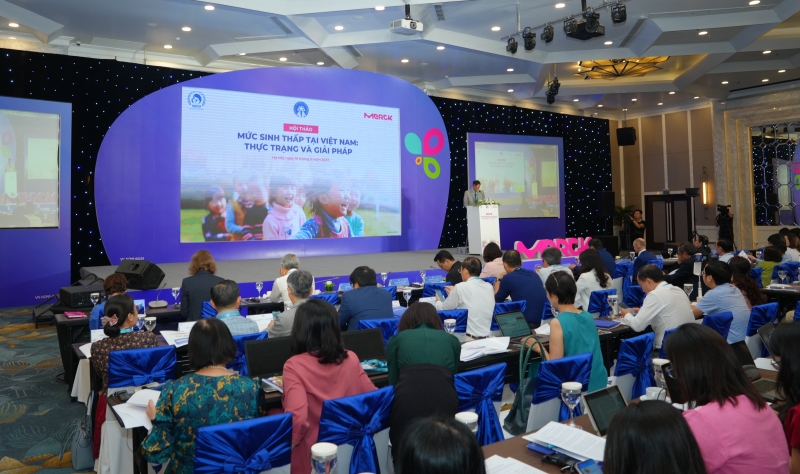
Overview of the Workshop.
In Vietnam, thanks to the success of the Population - Family Planning program, the replacement level of fertility has been achieved with an average of 2.1 children per Vietnamese woman of childbearing age, 15-49 years old, since 2006 and has remained so far. However, the fertility rate varies significantly between regions, subjects, provinces and cities, especially the trend of low fertility. According to the General Statistics Office, in 2021, the fertility rate of urban areas, all provinces and cities in the Southeast region (except Binh Phuoc ) and the Mekong Delta region have actual fertility rates below the replacement level. In which, some provinces and cities have very low fertility rates of 1.48 children.
In addition, it is estimated that each year there are more than 1 million infertile couples, a rate of about 7.7%. Of these, about 50% are couples under the age of 30. In particular, the rate of secondary infertility (infertility after one pregnancy) is increasing by 15-20% each year and accounts for more than 50% of infertile couples.
Low birth rate has a direct and profound impact on population structure, a decline in the working-age population, a strong impact on migration, rapid population aging, and a decline in population size. At the same time, it has a profound impact on family structure, cultural and social life, economy, labor, employment, and social security.
Vietnam's Population Strategy to 2030 emphasizes the goal of "firmly maintaining replacement fertility and reducing fertility disparities between regions and groups". These are very timely population policy orientations, aiming to improve the low fertility situation in some regions, provinces and cities, especially where low fertility trends appear. To achieve this, it is necessary to have policies and strategies to support population work in the coming time.
At the workshop, the Fertility Practice Intervention Policy Toolkit for Asia-Pacific countries, researched by Economist Impact, was announced. The toolkit is an important part of the Fertility Counts project - an initiative to address economic and social challenges related to low fertility in the Asia-Pacific region, sponsored by Merck Healthcare. Fertility Counts is a global project with the participation of researchers, public and private managers, examining the economic and social impacts of declining fertility and proposing solutions to help improve this situation. The Fertility Counts initiative has been recognized by ASPIRE - the organization of experts in the field of fertility in the Asia-Pacific region. This will be a tool to help Vietnamese policymakers refer to, review, research, and evaluate the feasibility of applying it in practice. The four policy groups covered in this toolkit are: Childcare, Workplace Policies, Financial Incentives, and Reproductive Support.
Official project information is updated on the website: https://www.fertilitycounts.com/.
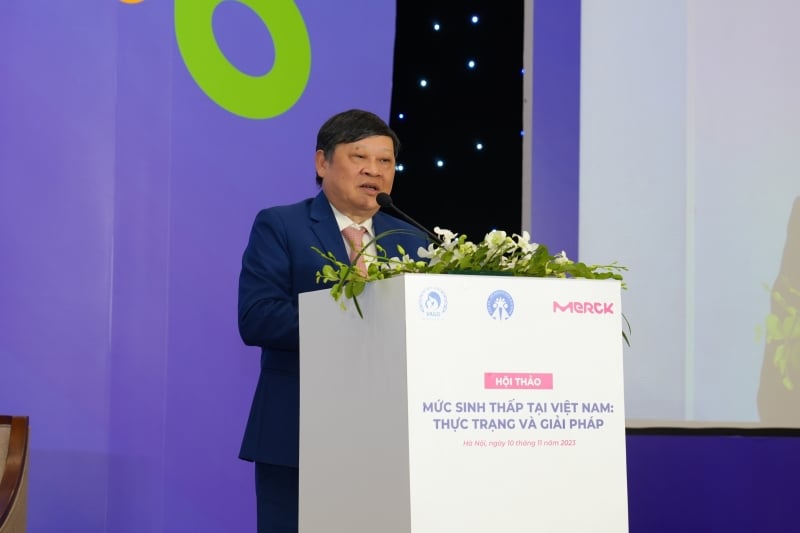
Prof. Dr. Nguyen Viet Tien - Former Permanent Deputy Minister of Health, President of Vietnam Obstetrics and Gynecology Association spoke at the conference.
Prof. Dr. Nguyen Viet Tien, Former Deputy Minister of Health, Chairman of the Vietnam Obstetrics and Gynecology Association also added that one of the important issues is the high infertility rate in Vietnam, we need to discuss intervention and support solutions in the coming time to help individuals and infertile couples enjoy the happiness of parenthood, contributing to improving the quality of life.
Mr. Alexandre de Muralt, Vice President Asia - Pacific, Merck Healthcare, shared that as a world-leading pharmaceutical company in the field of assisted reproductive treatment, contributing to the creation of life with more than 5 million babies born through IVF, equivalent to nearly half of the babies born through this method globally since 1978, Merck Healthcare always wants to contribute to creating positive social impacts and helping promote sustainable development.
“With the Fertility Counts project, we want to contribute to creating added social values, including: Creating new lives, improving work-life balance, educating about reproductive awareness, as well as diagnosing and accessing early infertility treatment for couples wishing to have children in the Asia-Pacific region, including Vietnam. Hopefully, the proposals on assisted reproductive policies can contribute to reasonable and effective population policies that the Vietnamese government has been implementing,” said Mr. Alexandre de Muralt.
Source link



![[Photo] General Secretary To Lam attends the 8th Congress of the Central Public Security Party Committee](https://vphoto.vietnam.vn/thumb/1200x675/vietnam/resource/IMAGE/2025/10/4/79fadf490f674dc483794f2d955f6045)
![[Photo] Solemn opening of the 8th Congress of the Central Public Security Party Committee, term 2025-2030](https://vphoto.vietnam.vn/thumb/1200x675/vietnam/resource/IMAGE/2025/10/4/f3b00fb779f44979809441a4dac5c7df)
![[Photo] Bustling Mid-Autumn Festival at the Museum of Ethnology](https://vphoto.vietnam.vn/thumb/1200x675/vietnam/resource/IMAGE/2025/10/4/da8d5927734d4ca58e3eced14bc435a3)



















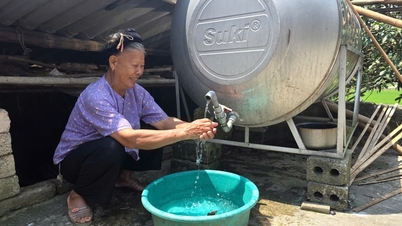










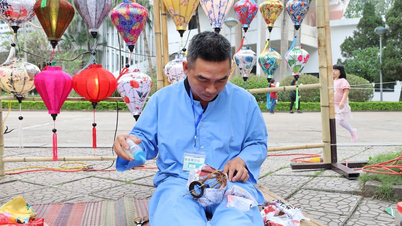
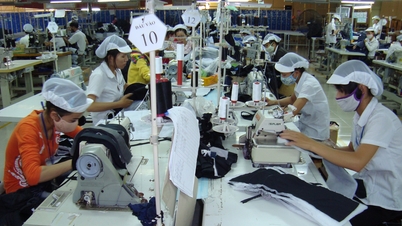





























![[VIDEO] Summary of Petrovietnam's 50th Anniversary Ceremony](https://vphoto.vietnam.vn/thumb/402x226/vietnam/resource/IMAGE/2025/10/4/abe133bdb8114793a16d4fe3e5bd0f12)

![[VIDEO] GENERAL SECRETARY TO LAM AWARDS PETROVIETNAM 8 GOLDEN WORDS: "PIONEER - EXCELLENT - SUSTAINABLE - GLOBAL"](https://vphoto.vietnam.vn/thumb/402x226/vietnam/resource/IMAGE/2025/7/23/c2fdb48863e846cfa9fb8e6ea9cf44e7)















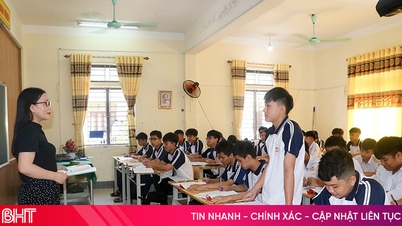















Comment (0)